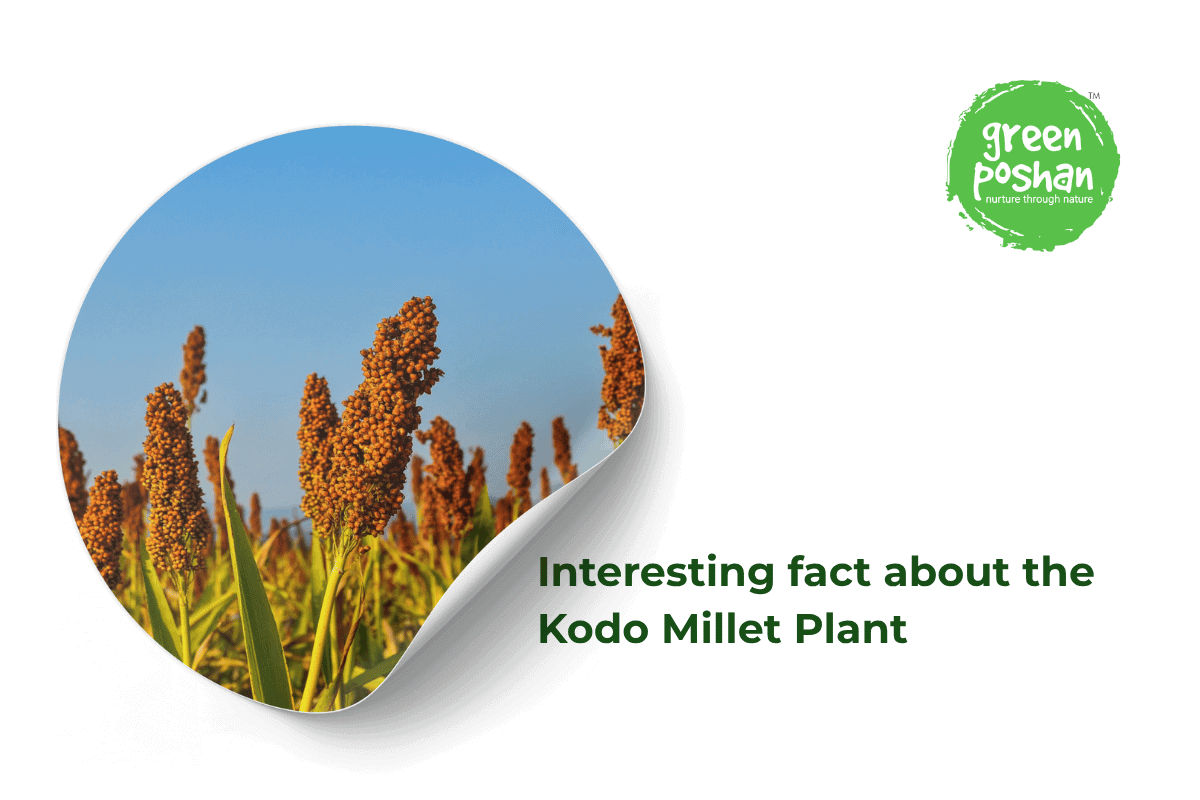1. Kodo Millet Scientific Name
- The kodo millet plant is scientifically known as Paspalum scrobiculatum, a member of the Poaceae (grass) family
- Synonyms include Panicum frumentaceum. Common regional names: kodra, varagu, arikalu, kodava, etc.
2. What Is Kodo Millet Plant?
- An annual, drought-tolerant grass that grows about 4 ft tall with slender leaves (~20–40 cm long) and produces small ellipsoidal grains (~1.5 × 2 mm) in clusters (4–6 racemes)
- Origin & distribution: Native to tropical Africa and domesticated in India over 3,000 years ago. Grows across India, Southeast Asia, and West Africa
- Cultivation profile: Thrives on marginal soils with minimal irrigation (450–900 mm rainfall), tolerates elevations up to ~2,900 m, and matures in around four months
3. Side Effects of Kodo Millet
- Digestive discomfort: High fibre may cause bloating or gas. Introduce gradually and keep hydrated
- Goitrogenic properties: Contains compounds potentially affecting thyroid function—moderation recommended for thyroid patients.
- Antinutrients: Phytic acid and tannins can reduce mineral absorption; soaking or fermenting reduces these
- Allergic reactions & contamination risks: Rare allergies reported; fungal toxins (e.g., cyclopiazonic acid from Aspergillus/Penicillium) may be present if improperly stored
- Drug interactions: May interfere with medications for diabetes, thyroid, or anticoagulants
4. Nutrition of Kodo Millet Plant
Per 100 g raw grains:
- Energy: 353 kcal
- Carbohydrates: 59–66 g
- Protein: 8.3–11 g
- Dietary Fibre: 9–10.2 g
- Fat: 3.6–4.2 g
Calcium: 27–35 mg; Iron: 0.5–1.7 mg; Magnesium: 146 mg; Phosphorus: 188 mg; B-vitamins, antioxidants (phenolics, polyphenols)
Kodo Millet — 250g
Kodo millet, a small, yellowish grain native to India, has long been a part of traditional diets in several states including Tamil Nadu, Madhya Pradesh, and Chhattisgarh. Known for its impressive nutritional value and easy digestibility, this grain has seen a resurgence in modern kitchens. Green Poshan brings to you high-quality 250g Kodo Millets, carefully sourced and packaged to deliver freshness and nutrition straight to your home.
Also known as Varagu in Tamil, Kodo millet is a smart substitute for rice and wheat. It’s rich in dietary fiber and essential minerals and is especially popular among people looking for healthier meal alternatives or following gluten-free diets. Whether you’re making khichdi, upma, porridge, or millet dosa, this versatile grain fits beautifully into various dishes.
5. About Kodra Plant
- Botanical & agricultural traits: As a hardy cover crop, it thrives on poor soils, controls erosion, and matures quickly .
- Farming challenges: Susceptible to lodging, ergot (Claviceps) infestation, and pest attacks. Row planting, balanced fertilization (N‑P), and proper threshing and cleaning are recommended
- Dual-use value: Used both for human food (porridges, rotis, khichdi) and animal fodder; wild varieties help with soil cover and famine food
6. Additional Valuable Insights
- Ayurvedic significance: Known as “langhana” (lightweight food) in Ayurveda, balancing Kapha, Pitta, and Vata. Used traditionally in managing diabetes, bleeding disorders, wounds, and inflammation
- Gluten-free & healing grain: Ideal for gluten-sensitive individuals. Antioxidant-rich grain supports healing wounds and overall immunity .
- Culinary versatility: Can be used in upma, dosa, pulao, porridge, salads; flour forms nutritious rotis and pancakes.
- Recipes often suggest soaking 6–8 hours before cooking
A final takeaway
The kodo millet plant (Paspalum scrobiculatum) is a time-tested, nutrient-rich, and resilient grain crop with numerous health benefits, especially for metabolic health, bone strength, and digestion. However, attention to preparation, storage, and moderation is key.
With proper handling, this ancient millet can be a valuable addition to modern, health-conscious diets.
Want more millet-based recipes or premium millet products?
Explore our Millets Collection for wholesome recipes, soaking tips, and top-quality kodo millet products to enrich your kitchen and well-being.


